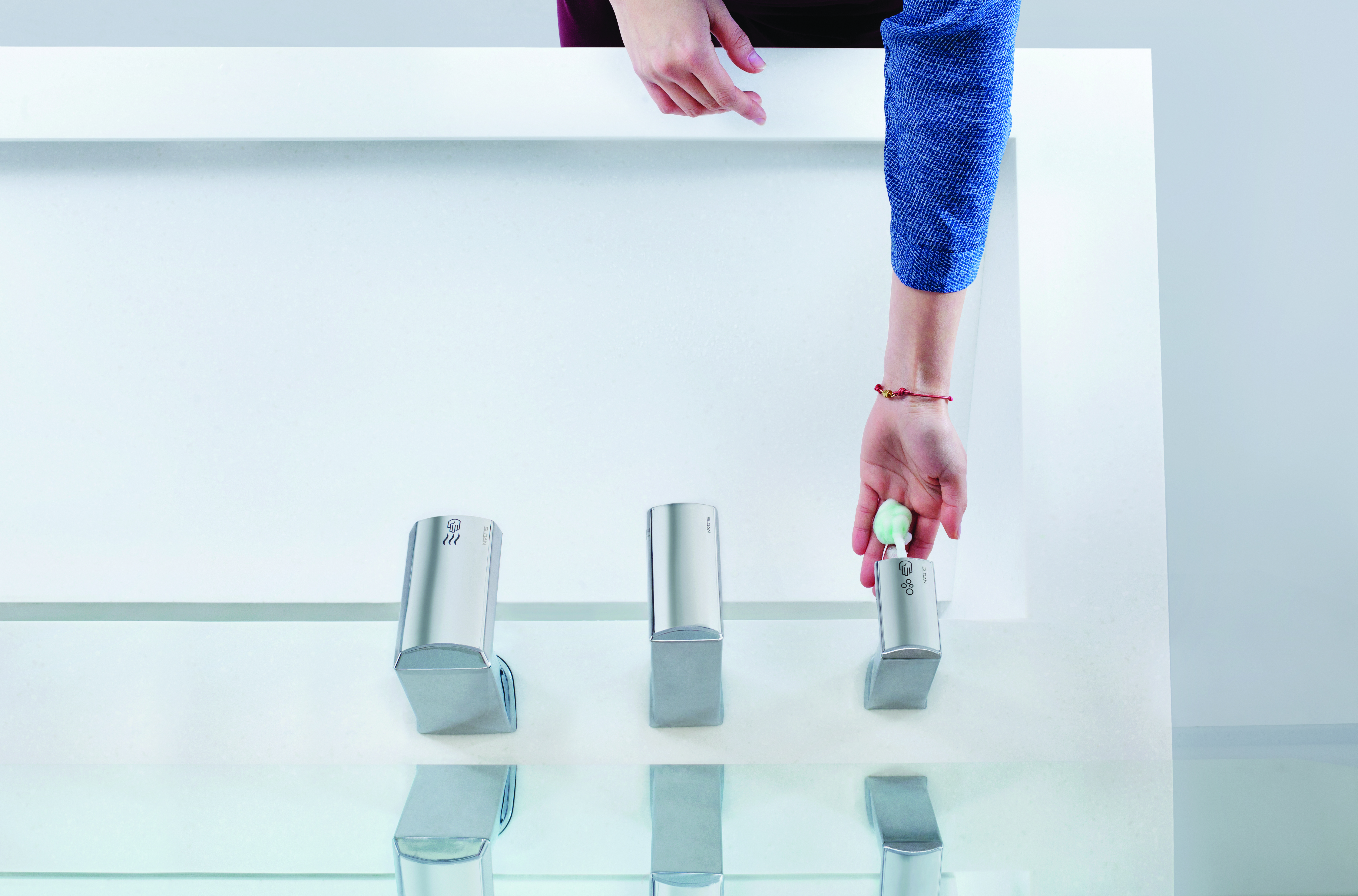The Internet of Things (IoT) is one of the fastest growing trends in today’s ever-evolving technology landscape. The concept of machine-to-machine communication to collect data at a centralized location for analysis, IoT is a modern network management system for various sensors, products and machines to connect through the internet – either via wired or wireless connectivity.
This technological revolution has now made its way to the commercial restroom, where manufacturers are implementing this technology to gather real-time information. Faye Badger is at the intersection of this growing phenomenon. Sloan’s new PLM for IoT, Badger is bringing her experience in wireless technology and software from her time at Motorola and as a consultant to help lead the company down the path toward IoT innovation.
How has Sloan already started to implement IoT into its products?
At Sloan, we’re developing faucets and flushometers equipped with sensor technology. These sensors pair with our Sloan Connect® App, where facility managers, engineers and more have a Bluetooth connection where they can program the fixture and collect information from it without ever touching the device. You can program it to collect data to see how many times it’s been activated, when it was last activated, its current battery strength and more. With this technology, users are now gaining a lot of information about their flushometers or faucets without ever having to touch them. It’s all there on a mobile device.
IoT adds additional benefits including unlocking predictive maintenance for facility managers. Instead of simply relying on the fact that you would typically change your batteries yearly, managers can actually look at specific faucets to see exactly what their battery strength is before they run out. You can also start looking across the devices to determine the most-often used fixtures. With IoT and the Sloan Connect App, facility managers can determine where there might be failures, when it’s time for maintenance and when you need to change the batteries to optimize their maintenance activity.
What other real-time benefits does IoT have on restroom technology?
With newfound data at your fingertips in one centralized location, facility managers will be immediately alerted if there’s a restroom malfunction. For example, when managing a large restroom with four high-traffic water closets, you can now notice if one of them hasn’t been used in the past hour and a half during a busy stretch. That could indicate to you that there’s a problem – either it needs to be cleaned or it’s not working properly. You’re really preventing customer dissatisfaction and keeping the restrooms as clean and as high-quality as possible. You don’t get a lot of comments about a clean restroom, but you sure get a lot of comments about a dirty one.
How does IoT facilitate water conservation efforts?
The actionable information that IoT delivers is helping to monitor daily water usage right down to the specific fixture. You can determine when there’s been a lot of extra water use where there may be a problem, to then check-in before something overflows. The flip side of that is that you can determine when a toilet hasn’t been flushed in awhile in order to proactively make sure it gets flushed once or twice in an effort to eliminate stagnant water and odor.
With IoT, it isn’t just about connecting devices, it’s about analyzing data and providing intelligence to the building managers and everyone involved. It’s not just the plumbers and the maintenance staff, it’s the building management systems and owners as well. While the data is important, the key benefits stem from the analysis and intelligence that data provides.
What are some of the challenges facing the commercial restroom in the growth and evolution of IoT?
I think one of the challenges is simply connectivity. When you get into different facilities that want wireless innovation, the question becomes what frequency should it be on and what’s the best way to connect everything together? It really entails taking a look at the different technologies that would be best for specific applications and I think it’s one of the things we really need to investigate.
I think the second thing is working with the customer to understand what type of data would be important for them to have. There’s tremendous value in going to the customer to determine what kind of data they want to see on a regular basis. It’s just understanding what’s best for what the customer wants, paired with Sloan’s excellent technology to bring it all together in a way where the customer is happy and has reliable connections.
What’s the next evolution of IoT in the commercial restroom?
I think the next evolution and progression from a commercial plumbing perspective is implementation into a Building Management System. These are essentially dashboards where you can see what’s going on with the electrical, HVAC, lighting and more. Ideally, you would want the plumbing component to feed right into that, because your customers are going to want one management system where they can click on different buttons and see what’s going on. Thus, our next step is to enable these big buildings and complexes to have a single stream and a single source to see what’s going on inside the building with all utilities. Sloan will use IoT and product enhancements to continually improve the customer’s experience.
This is the fifth edition in a series of Q&A segments with Sloan product line managers for their take on where the commercial restroom has been, what it’s evolved to now and where it’s going. A previous edition on flushometers can be found here.
Stay Up to Date
Sign up for the Sloan blog to receive information on the latest trends in commercial building, technology advancements and product updates. It's the leading source of industry news for architects, designers, engineers and contractors.
